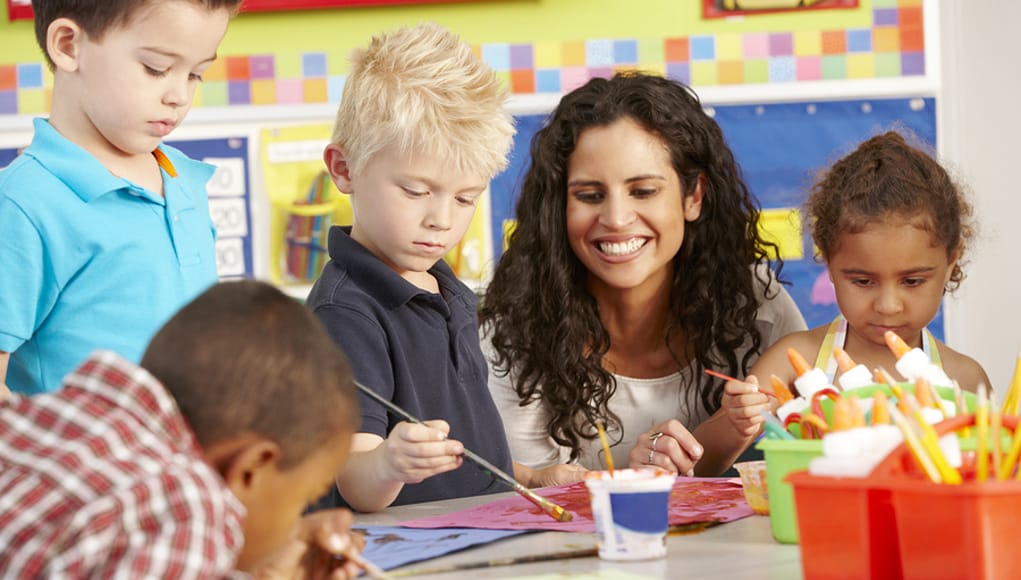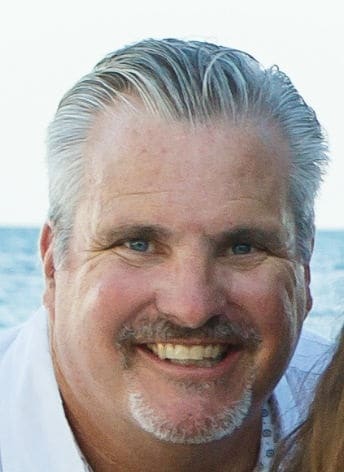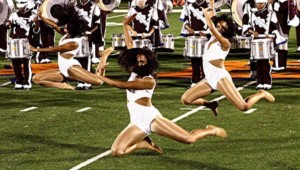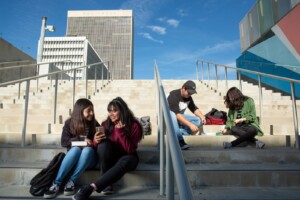Cultivating the Culture of Creativity

Ever since the Partnership for 21st Century Skills introduced the Four C’s into the education vernacular, we have been trying to define, and maybe most importantly, actually implement, Collaboration, Communication, Creativity and Critical Thinking into our instructional practices.
One of the Four C’s that is particularly routinely referenced and seen as foundational to our students’ future success is creativity. Most see it as essential to innovation, entrepreneurship, technology, and solving our many global challenges.
But as foundational as we collectively view creativity to be, it is also elusive in terms of common understanding and implementation. We can point to the word on a presentation slide, but often find it difficult to identify in the real world, let alone how to teach it, grow it and enhance it. So, let’s see if we can identify some elements that would help to create and cultivate a culture of creativity. As educators, how can we help all of our students tap into and optimize this very important C? How can all of us who are responsible for learning environments (classrooms, school sites, districts) create the cultural conditions that foster creativity rather than limit it? Try on these for size:
Define and Refine (Beyond the Arts)
If we agree that the Four C’s, and in this special case creativity, are essential, then we need to help both students and educators define it. Or, maybe, it’s refine. If you poll most students or educators, they will more than likely define creativity in terms of artistic endeavors such as music, drawing, painting, singing, acting – in other words performing and visual arts. And of course those are creative endeavors. But the challenge is that we have been taught, perhaps as a coincident of this perception, that creativity is an innate skill that cannot be developed and practiced. In other words, we are either creative or we’re not. This is our first hurdle. We need to help others see creativity as a vital aspect of every professional and personal endeavor worth examining.
Think culinary skills, entrepreneurship, design, engineering, architecture, product development, advertising, marketing and so on. But really, creativity is part of everything – every idea that becomes a reality. Creativity exists in how we work, whom we partner with, what we choose to produce, where we choose to work, what tools we choose to use and more. Teach Like A Pirate creator Dave Burgess says he often gets feedback that his immersive teaching and learning experiences are great, but that they are “for those that are creative.” He quickly shares with us that this is the wrong assumption. Creativity occurs when we focus our energy, time and resources on being creative. It’s not innate or an accident. It’s a process that we all have capacity for, but all have to invest in as well.
Eat Cheese, Spark Chaos
One education myth I frequently hear is that students, for that matter all human beings, need routine in order to feel comfortable, experience lower anxiety, and be able to predict and ultimately produce and perform. Well, this might be true. And we certainly, both in schools, and in our personal lives, seem to cling to routine. But routine is not the same as protocols or norms. Routine seems to also lead to complacency and automation. So, we can keep our rubrics, forms and systems. But if we want to encourage creativity, we might need to break routine.
As Tom Robbins said in Even Cowgirls Get the Blues, “In times of widespread chaos and confusion, it has been the duty of more advanced human beings–artists, scientists, clowns and philosophers–to create order. In times such as ours, however, when there is too much order, too much management, too much programming and control, it becomes the duty of superior men and women to fling their favorite monkey wrenches into the machinery. To relieve the repression of the human spirit, they must sow doubt and disruption.”
This could be similar to the famous question “Who Moved My Cheese?” Well, as educators, leaders and lifelong learners, let’s move that cheese. Let’s disrupt the routine. Let’s throw that monkey wrench into our school and classroom complacency (routines). This is based on the idea that if we want innovation, entrepreneurship, leadership, growth – i.e. creative endeavors – success depends on how we push the boundaries, reshape the environment and rewrite the rules.
As a principal of a small, project-based high school, I tried to continually move the cheese for both students and teachers. For example, we used to reverse the schedule on occasion. Instead of first period starting the day, it would end the day. The last period of the day was now first. This simple switch would produce all types of reactions. Some loved it, some hated it – but all were disrupted. It forced teachers to evaluate why that last class of the day had a different culture. Students said things like “I loved having math first thing in the day for once” or “It was hard having math at the end of the day.” These realizations were for the students and the teachers. For me, it was about adding just enough chaos to hopefully get people thinking, reflecting, ideating – you know, creating.
Fight Fear
Nothing stifles creativity more often than fear. Too many of us, including many students and educators, are just operating from a place of fear. We are afraid of failure, exposure, ridicule, meeting expectations, being judged, the unknown, operating outside our systems and norms… and so much more. Students and educators need to understand that these fears are normal, but that they are limiting. They can only understand this if the right environments are provided for them. They have to trust those they work with and alongside. From the top on down, educators need to model that they are not afraid of the aforementioned outcomes. Sadly, in education we have created a system, from top down, that is often all about maintaining the status quo and not rocking the proverbial boat. However, this runs counterintuitive to creativity. If we want authentic and consistent creativity, from students and educators, we need to remove barriers that are foundational in our systems. Many rules, policies, expectations, assessments, data collections, curriculum, instructional practices, grades and traditions not only discourage creativity, but explicitly inhibit it.
So, once we continue to define/redefine, each the cheese of chaos and change, and pledge to fight fear in all capacities, what are some concrete manifestations of this commitment to cultivating a culture of creativity? What could all of us in schools do tomorrow to create a culture that would foster and encourage more creativity? Here are just a few ideas:
- Smart Start (see my past article on how to Smart Start Your School Year).
- Breakaway from packaged and corporate curriculum and move more towards project-based learning and other inquiry-based practices.
- Recognize and reward creativity across all disciplines and endeavors.
- Teachers and Administrators should share stories about their own and students’ creative endeavors (blogging, social media, web content, videos).
- Host, coordinate and facilitate school-wide challenges, contests, competitions related to projects and other endeavors that require creativity.
- Allow students to solve school and real-world problems.
- Add and create new elective courses, intercessions or lame duck days where teachers can create short or long-term experiences related to their passions, interests and sense of creativity (Lame Duck School Days).
- Throw wrenches into schedules, routines, expectations and past practices.
- Change the physical environment – new spaces, technology and situations may induce new ideas, collaboration an inspiration (Six Must Have Learning Spaces for PBL)
- Foster and encourage projects of passion, student voice and choice – things like (20time.org) and (20time in Education) are a great way to get started.
In the end, like almost everything, creativity might be a mindset or a condition. All students, teachers and leaders can be creative if they are given freedom, trust, opportunities, resources and crazy good expectations/challenges.
For more, see:
- At the Intersection of Creativity and Critical Thinking
- A Celebration of Cross-Curricular Creativity
- 5 Ways for Teachers to Nurture the Creative Genius in Their Students
Stay in-the-know with all things edtech and innovations in learning by signing up to receive our weekly newsletter, Smart Update.






0 Comments
Leave a Comment
Your email address will not be published. All fields are required.